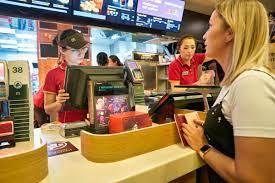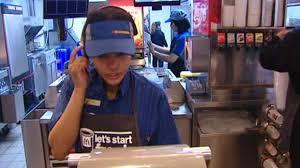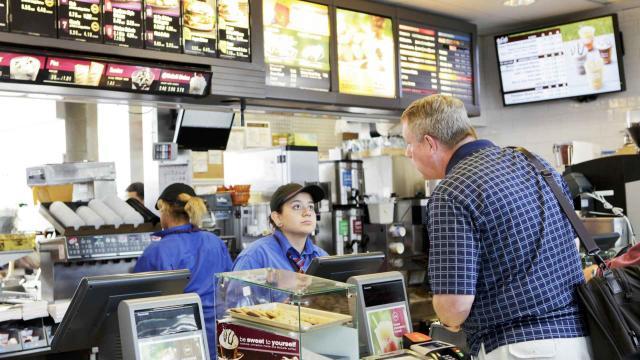The governor of California, Gavin Newsom, has released a statement claiming a major accomplishment for his office’s recent change to the minimum wage, and benefits to both workers and businesses.
Newsom linked the wage rise, from $15.50 per hour to $20 per hour, to the increase in an important fast food industry metric that he claims proves spreaders of misinformation “wrong”.
Minimum Wage Rise

The minimum wage rise affected all low-paid workers but much of the press focus has been on its effect on the fast food industry in particular.
The bill was initially announced in September, at which point businesses were able to start making preparations, but only came into force on April 1st.
Concerns Regarding the Bill

Industry voices and members of the public were vocal about a number of potential consequences of the increase.
Reports came out that the bill had driven price increases in chains, and small businesses were having to cut staff hours.
Job Numbers Going Up

But one metric at least appears to be on the rise, and it may help to allay some of the fears observers had about the impacts of the minimum wage bill.
According to the US Bureau of Labor Statistics (BLS), an official US government body, job numbers have been on the rise since the bill’s introduction.
Record High

Not only have job numbers been going up, but the total jobs in the fast food industry has managed to hit a record high for California.
In July, the month for which statistics are most recently available, 750,500 fast food workers were reported, and increase of over 10,000 since April.
Lie Peddlers

Newsom’s office were quick to capitalize on the released statistics, linking the new minimum wage bill to the promising stat.
In a public statement, Newsom wrote: “Despite those who pedaled lies about how this would doom the industry, California’s economy and workers are again proving them wrong.”
Tough Decisions

However, stats rarely tell the whole story, and some other important metrics will need to be scrutinized in addition to job numbers.
Back in July, Jot Condie, CEO of the California Restaurant Association, told AP News: “[Small restaurant owners] don’t have a lot of options beyond increasing prices, reducing hours of operation, or scaling back the size of their workforce.”
Price Increases

There were also reports that fast food chains had passed on the cost to the customer, increasing prices in their stores across the state.
At the beginning of April, Chipotle said in an investor call that they had put up their prices by 6-7% in almost 500 restaurants in California.
Consistency of Job Growth

The job growth statistics will continue to be watched, especially as the busier summer period comes to an end, but they have shown consistent growth in the past few months.
According to the BLS numbers, every month this year has seen thousands of jobs created in the California’s fast food industry alone.
Benefit to Businesses

Newsom also claimed in his analysis that, in addition to being a boon to the workers, the bill will also benefit business owners.
He said, in his statement: “What’s good for workers is good for business, and as California’s fast food industry continues booming every single month our workers are finally getting the pay they deserve.”
Evolution of Fast Food Labor Landscape

The fast food industry emerged in the 1950s with drive-in restaurants. Labor was initially cheap and plentiful, often teenagers.
The 1970s oil crisis led to a shift towards value meals. This change impacted labor costs and wage structures.
Reagan Era: Trickle-Down Economics and Wages

Reagan’s economic policies affected fast food wages in the 1980s. The emphasis on deregulation influenced labor practices.
Tax cuts were expected to boost wages indirectly. However, fast food workers saw little benefit from this approach.
Globalization’s Impact on Fast Food Employment

The 1990s saw rapid globalization of fast food chains. This expansion created new labor dynamics worldwide.
Wages varied significantly across international markets. Cultural differences influenced wage expectations and regulations.
Social Media’s Role in Wage Transparency

Social platforms became tools for wage discussion in the 2010s. Workers shared pay information more freely online.
his transparency put pressure on chains to address wage disparities. It also facilitated organizing efforts among workers.
Regional Cost of Living and Wage Disparities

Fast food wages vary significantly by region. High-cost areas like New York City saw earlier wage increases.
Rural areas often maintained lower wages for longer periods. This disparity led to debates about national vs. local wage standards.


